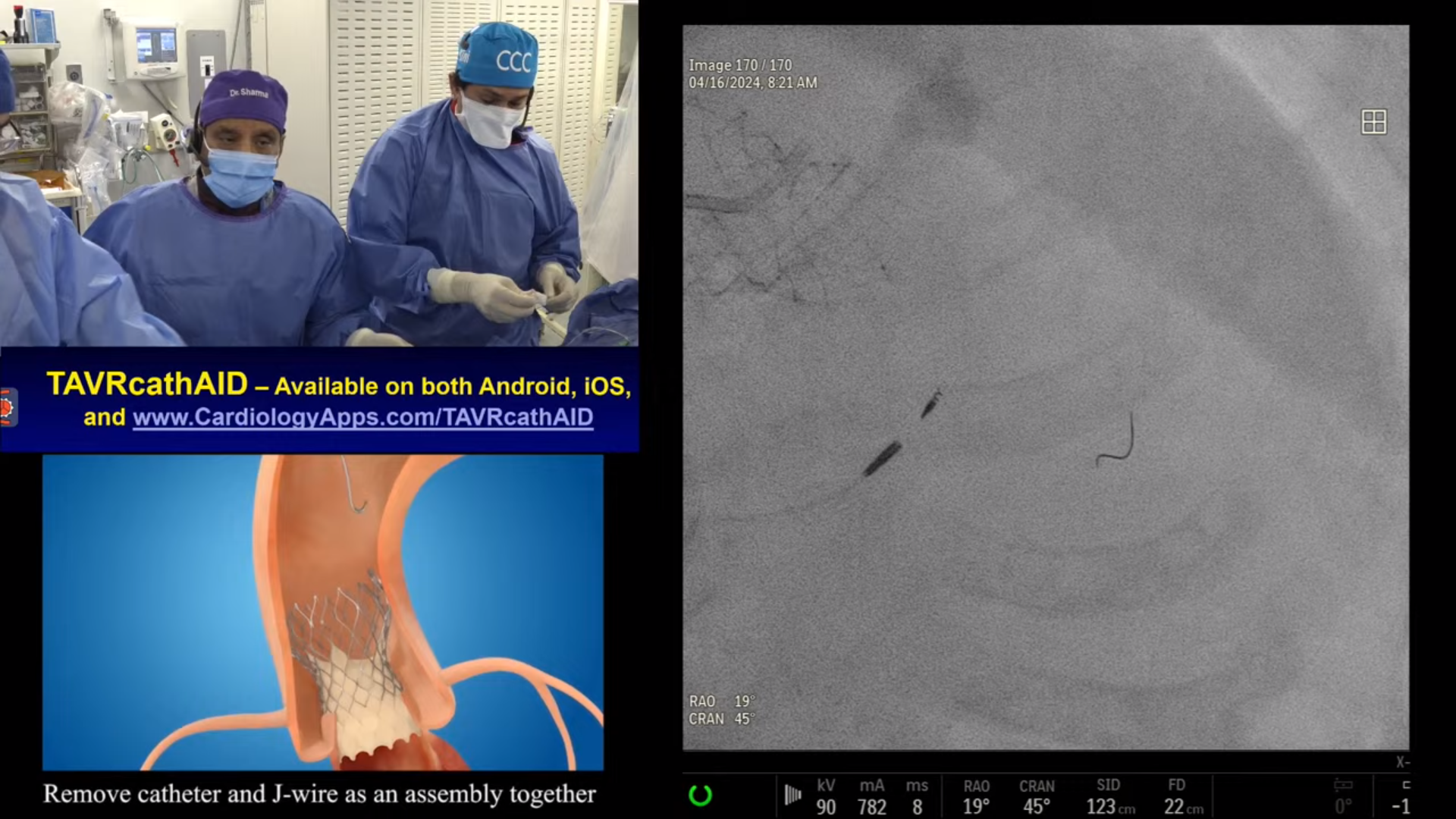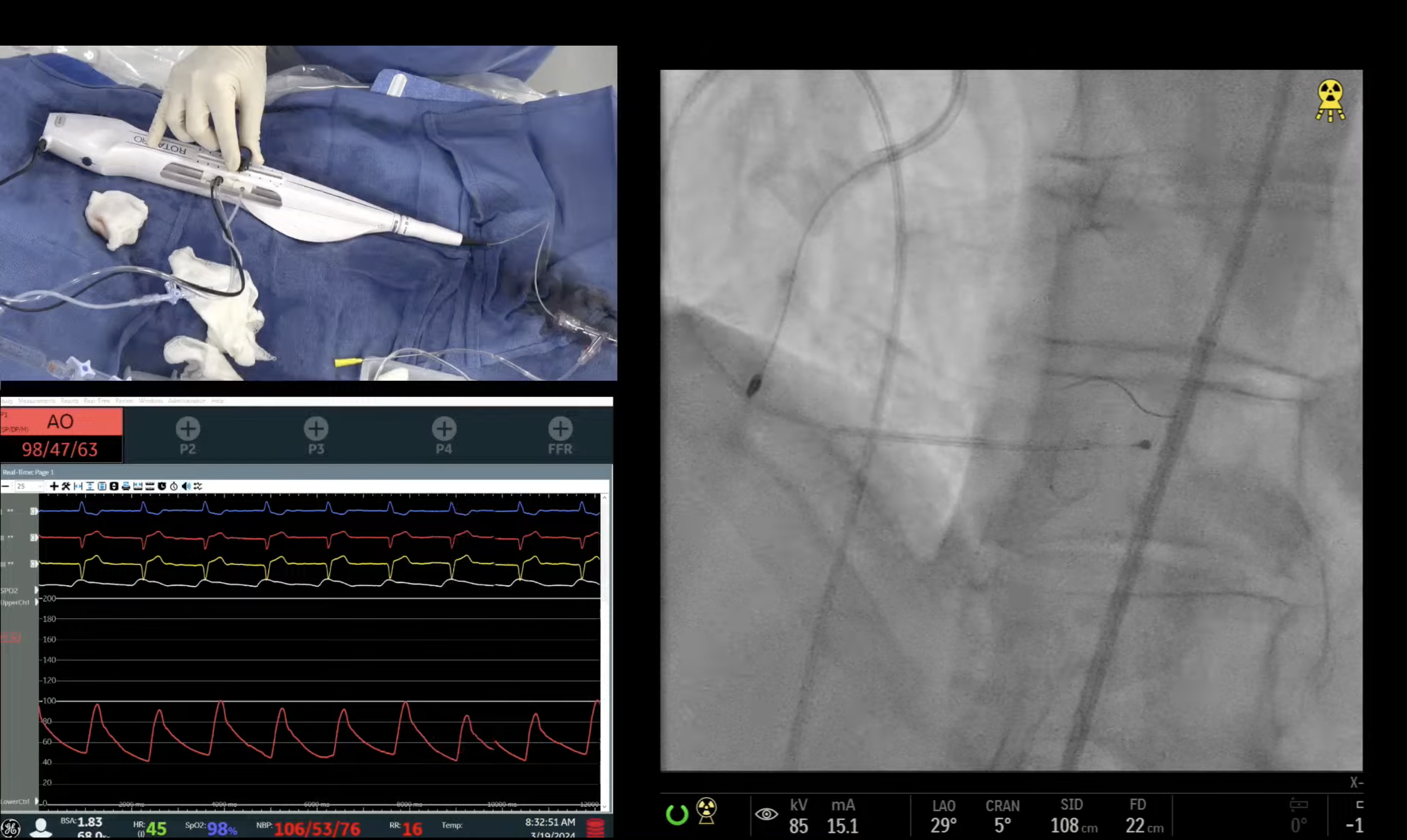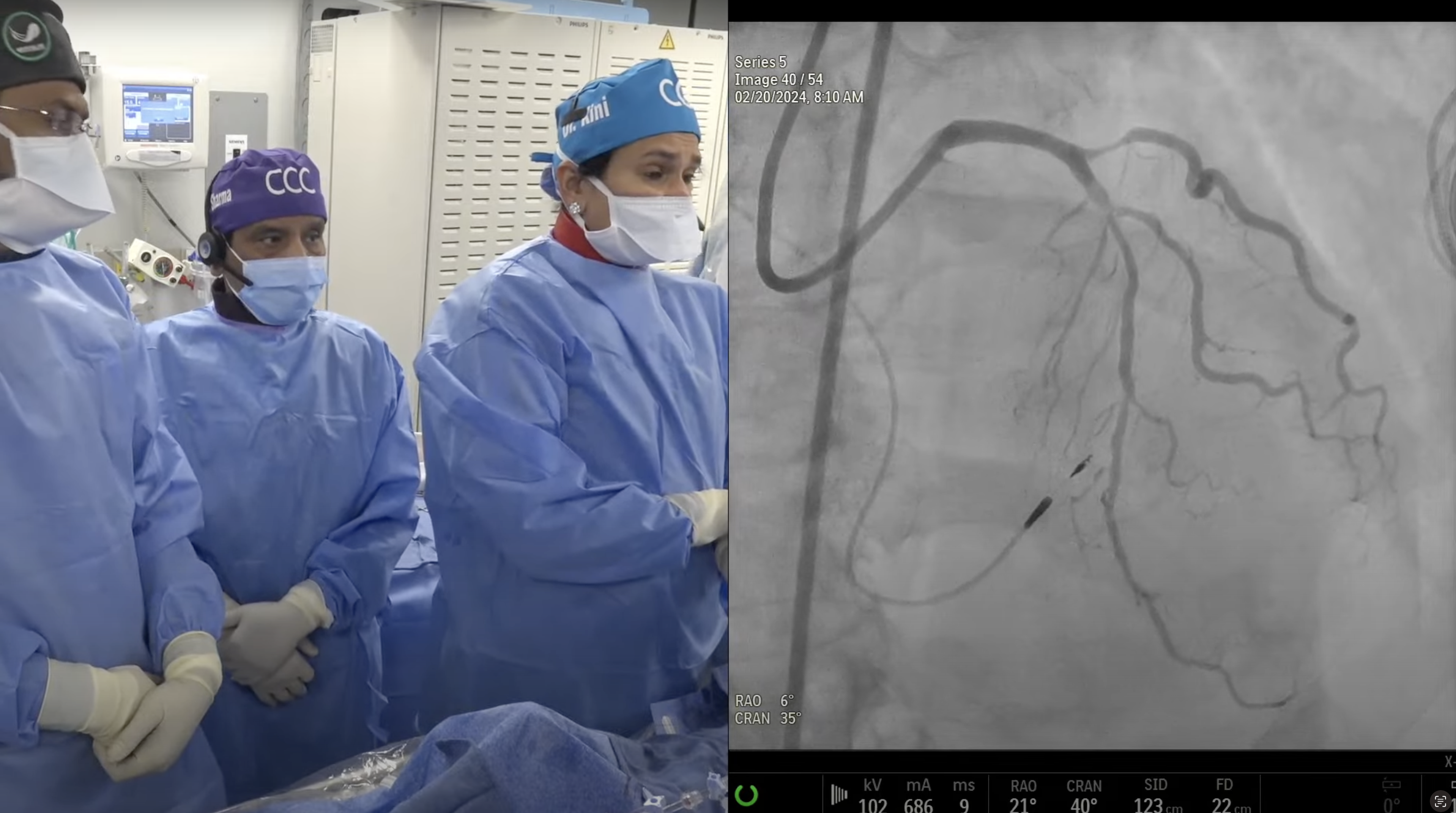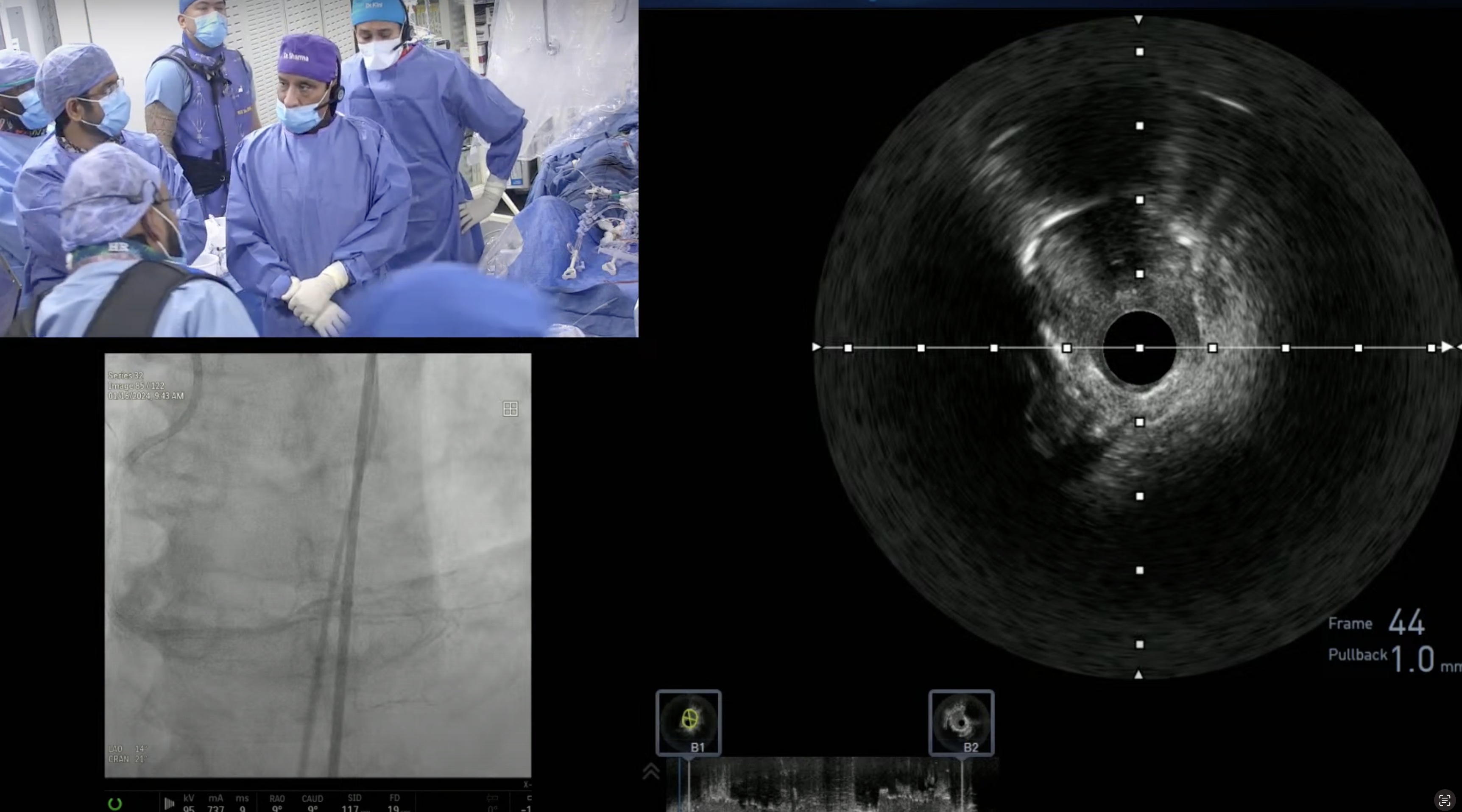80 year-old male with stable angina and NIDDM presented with CCS Class IV angina. A Cardiac Cath on February 16, 2016 (at an outside hospital) revealed calcific 3V+LM CAD; calcific 90% distal LMCA, 80% proximal LAD, 90% proximal LCx, 90% calcific mid RCA with in-stent restenosis and normal LV function; SYNTAX Score of 33. After heart team discussion, CABG was recommended but declined. Patient underwent successful intervention of mid RCA (Atherectomy and Promus Premier DES). Patient is now planned for staged PCI of calcific LM bifurcation lesion using rotational atherectomy and dedicated 2 stent approach.
Moderator: Sameer Mehta, MD
Q&A
Q
Would there be some situations where you will use an Impella LVAD for normal LVEF?
A.
Yes a complex intervention of the only patent vessel to heart, such as the only patent degenerated SVG to LAD or LCx with normal LVEF, may be appropriate for Impella assist.
Q
Would it be acceptable in this case to have a left groin access as PCI is done for the LMCA from the right groin?
A.
Yes that is a good strategy.
Q
Between Orbital Atherectomy and Cutting Balloon, how do you select to employ for a case?
A.
Atherectomy (orbital or rotational) is reserved for severely calcified (tram-track) lesions while cutting balloon for ostial and moderately calcified lesions.
Q
How often do you perform "double atherectomy" with Rotational and Orbital/CBA?
A.
We commonly use atherectomy followed by cutting balloon Atherotomy before stenting in the large vessels (>3.5mm). Probably 1/3rd of those cases. Rare cases where Orbital atherectomy will not cross the lesion, we have successfully used 1.25mm Rota burr with good results and no complications.
Q
If there was some resistance when using rotational ablation for LCX ostium, would you have downsized?
A.
Yes especially for angulated LCx ostium, we have very low threshold to downsize the rota burr and to use the small burr to begin with.
Q
Why did you feel that there was no wire bias for the LCX? Was it better positioning of the guiding catheter?
A.
Guide catheter was well aligned and will still cause some wire bias due to LCx angulation.
Q
With the available data, which would be your top 3 conditions for using BVS?
A.
Young person (<65 yrs age), proximal-mid lesion in a large vessel (>3mm) and lack of severe calcification.
Q
With the available data, which would be your top 3 conditions for NOT using BVS?
A.
DAPT non compliance, dedicated 2 stent strategy in bifurcation and vessel size <2.25mm.
Q
What would you use the cutoff size for the small diameter to use for BVS?
A.
Vessel smaller then 2.5mm size should be avoided for BVS for risk of higher ScT.
Q
Would you use BVS in STEMI?
A.
Yes in proximal lesions in vessels over 3mm size and EVERBRIO trial has shown BVS safety in STEMI.





